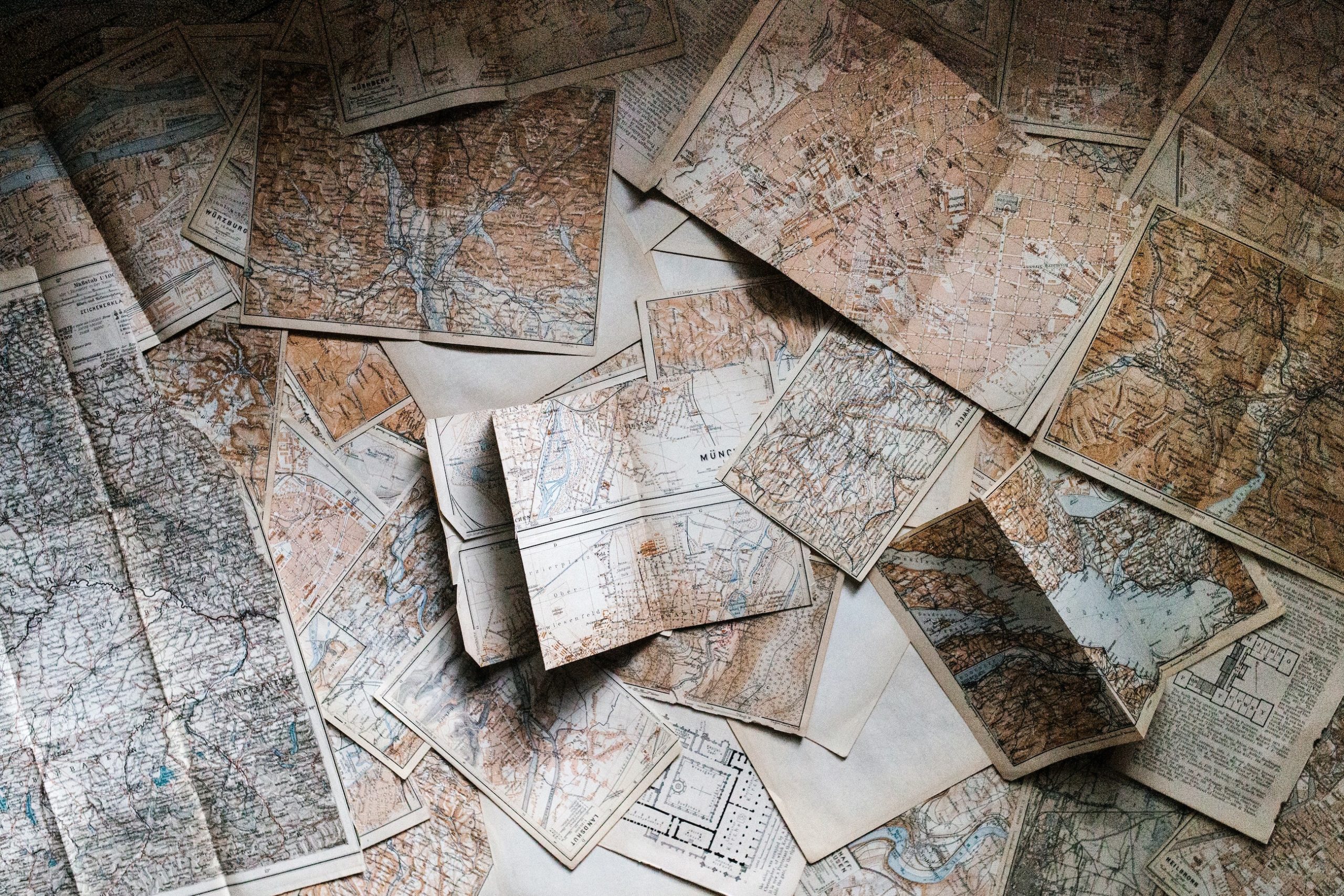Planning Your Heritage Trip
Planning a heritage trip is not that different from preparing for any other trip, but there are a few things you want to make sure you do ahead of time to get the most out of the experience.
The biggest thing is to set your intention for the trip. What do you hope to accomplish, and what is the main focus?
Are you traveling simply for the experience and to immerse yourself in the culture?
Are you trying to find specific records and do more research on something?
Are you wanting to connect with potential relatives?
All of these are common goals, but based on what your goals are, you may want to approach it a little differently. And when the outcome is different, the logistics are different.
Here are my recommendations about what to consider when planning your heritage trip:
Before Your Heritage Trip
1. Identify how the Place is Connected to You
This may sounds obvious, but determine well ahead of time exactly how the place you are visiting is related to you. Who lived there? When? Where? And why did they leave? You’ll want to do this well ahead of time to give yourself a chance to research thoroughly.
You’re not going to be able to find every single person or place, so release that expectation right away. That’s just the way it goes. You will inevitably come back home only to discover yet another ancestor or connection, regardless of what place you choose, but that’s just how things go. Don’t worry about it. You’re not going to be able to get everything and that’s alright. Just do your best.
2. Read up on the History of the Region
Now that you know your relationship with the place, read up on the history of the region to get some context. Especially the time period when your ancestor lived there. Was there a war? Was there a famine? Something else going on? Those details are so important for you to understand so that you can get the full story. This, again, is something you should start well ahead of time, so you have time to take things in and learn.
What is the area known for? Whether it’s architecture, food, or something else, you’ll want to experience that when you’re there, so jot down some notes about potential experiences that you might consider partaking in.
3. Learn about Local Customs
Before you start contacting potential living relatives, you’ll want to brush up on local customs – the dos and don’ts, – so that you don’t commit a bunch of faux pas unnecessarily. First impressions count as we know, and it’s always very appreciated if you know a bit about how to show up. It’s a sign of respect and genuine interest.
One of the most rewarding things to do on a heritage trip is to connect with distant cousins and other relatives that you may not have met before, but a mistake I see happen a lot is that people send a quick email the week before the trip. This is not OK. The last thing you want to do is to spring something like this on a new relative.
Like with any new relationship, you want to nurture and develop the connection for a while before you show up there, and the more you do this, the better the trip will go. I have facilitated many of these types of connections over the years, and the ones that go the best are the ones where the relationship develops of a period of a few months.
So in a nutshell, you’ll want to start thinking about this well ahead of time, and make contact at least 6 months out. That gives you enough time to explain to the person how you are connected, meaning through what ancestor, provide proof of that, and develop the relationship. Don’t rush this part.
Don’t Forget a Gift!
Once you know a bit about the person you’ll be meeting and the family, you’ll have a much easier time picking out a gift for them. And yes, that is definitely something you want to bring. Usually, I recommend something local from your area that the person might be interested in, for example a local treat. If in doubt, something that is always appreciated are photos from your family line or a framed family tree, so that they can visualize your side of the family.
5. Plan your Itinerary
An itinerary is a must for a heritage trip because there will be a lot to see and do in a limited amount of time, and you’ll want to start planning that well in advance too. You’ll likely have a few places on your list, for example the local library, the local history museum, maybe the local archives, and likely also the place where your ancestor lived.
The biggest thing here will be contacting them to verify their hours of operation and whether or not you need an appointment. It’s always best to contact them and let them know that you’re coming plus what days you’d ideally want to visit. Pre-Covid, it may have been enough to just look on the website to see what the hours of operation was, but that’s no longer the case as a lot of places have switched to by appointment only. Also, being on a limited time schedule, it’s important that you don’t just show up because the disappointment will be huge if you came so far, you finally went, and then you can’t get access.
Remember to Include Flex Days & Downtime!
When planning your itinerary, also plan in a flex day or two in case something goes wrong. I’ve been to many places where I wanted to do some research, but for whatever reason, I couldn’t get through everything I wanted in one day. When that happens, it’s very nice to be able to come back the next day to finish. You want to make sure you schedule plenty of time for yourself, and if you end up not using it, fine, but if you need it, it’s amazing to have it.
On this point, I also want you to make sure to schedule in some downtime. On heritage trips, it’s easy to get carried away with research and documentation, but you don’t want to forget to enjoy it either… so make room for some relaxation and fun so you don’t have a stressful time on a jam-packed schedule. A little breathing room is always nice.
6. Reserve Materials
The next thing you’ll want to do after having checked with the places you are visiting when they are open, is to check with them how to reserve what you want to look at ahead of time. This is very common to do at libraries and at archives, and the last thing you want is to show up and find that someone else has reserved what you need to see. That is very frustrating and will through everything off, so work this out ahead of time.
A lot of places will let you do this online, but if not, check with the staff about how to go about it. This is essential because many archives will store things in different places, and they will need to gather it and have it ready for you when you show up. Give them the heads up!
7. Ask for Permission to Film & Photograph
This is another pre-production must for your heritage trip, so you want to take care of this well in advance. Not all places allow you to film or take photos. Make sure you know what the requirements are – are you allow to, or not? That’s one? If you need a permit, how do you apply for one and get it approved? That’s number two. Check that, get it done, and bring the proof with you when you visit. This is especially important for historical places and for archives. You’ll likely also want to make copies of things you find in the archives, so make sure you know what the policy is on that.
8. Make a Shot List
What do you need photos and videos of? Make a list so that you can remember all of those things when you are there. Some good examples are always a great photo of you and your family in town, with your new relatives, trying something new, your ancestor’s home or grave marker, and of course, signs that you see. One that comes to mind instantly for me when I think about that is the “Welcome to Vegas” sign that you may have seen in movies. It’s always good to have a list of what you want to take pictures of beforehand, so that you don’t forget when you visit. To find where all the places are today, look for maps from your ancestors’ time period overlay with modern maps to verify that you have the right spots.
9. Consider a Local Guide
Consider if it’s worth getting a local guide to help you. This may cost a bit of money, but it’s usually money well spent. This is especially helpful if you don’t speak the local language, if it’s your first time visiting, or if you’d like a deeper understanding of the culture and history. A great place to start is to contact the local historical society to ask if they know someone who might be able to help – usually they know everyone in town who is an expert. If that doesn’t work out, the local genealogical society usually also have great resources and friendly people who would love to help you explore. If not, perhaps your next cousin can help out?
10. Confirm Appointments
Finally, before you head out, double check and confirm all appointments, especially if it’s been a while since you made them. In a place where you stay longterm, you have more flexibility in coming back to visit another day, but if you’re on a limited time schedule and have to journey on, no shows and rescheduling can completely derail your plans. Take a few minutes out of your day to reconnect with your contacts and verify that you have the right time and place.
What to Pack
When on a heritage trip, you’ll want to travel lightly, BUT you also want to make sure that you make space for the important things that help you enjoy the experience to the fullest. You’ll have to create your own list, but here’s what I bring every time I head out:
Specifically for Family History Research:
- printed itinerary
- Contact information for everyone i’m meeting
- Printed family tree
- Copies of old photos and important records to compare
- Copies of photos and records for relatives
- Maps for research area
- Notepad and working pens
- Permit slips for media and any relevant communication
- Confirmations of bookings
Technology:
- Laptop computer with charger
- External hard drive, if needed
- Outlet Adapters
- Portable scanner, like flip-pal with charger
- Go Pro with Charger and extra batteries
- DSLR with charger and extra batteries
I hope this was a helpful guide on how to prepare for a heritage trip – with a little bit of planning and a lot of excitement, it is sure to become one of the most meaningful trips you’ve ever been on!
Next, you’ll want to read my guide on what to do during your trip – it’s available right here!
- About the Author
- Most Recent Posts
Hi there! I’m Caroline, and I’m here to help you get organized and be more productive, so that you can live better and have time for what matters.

